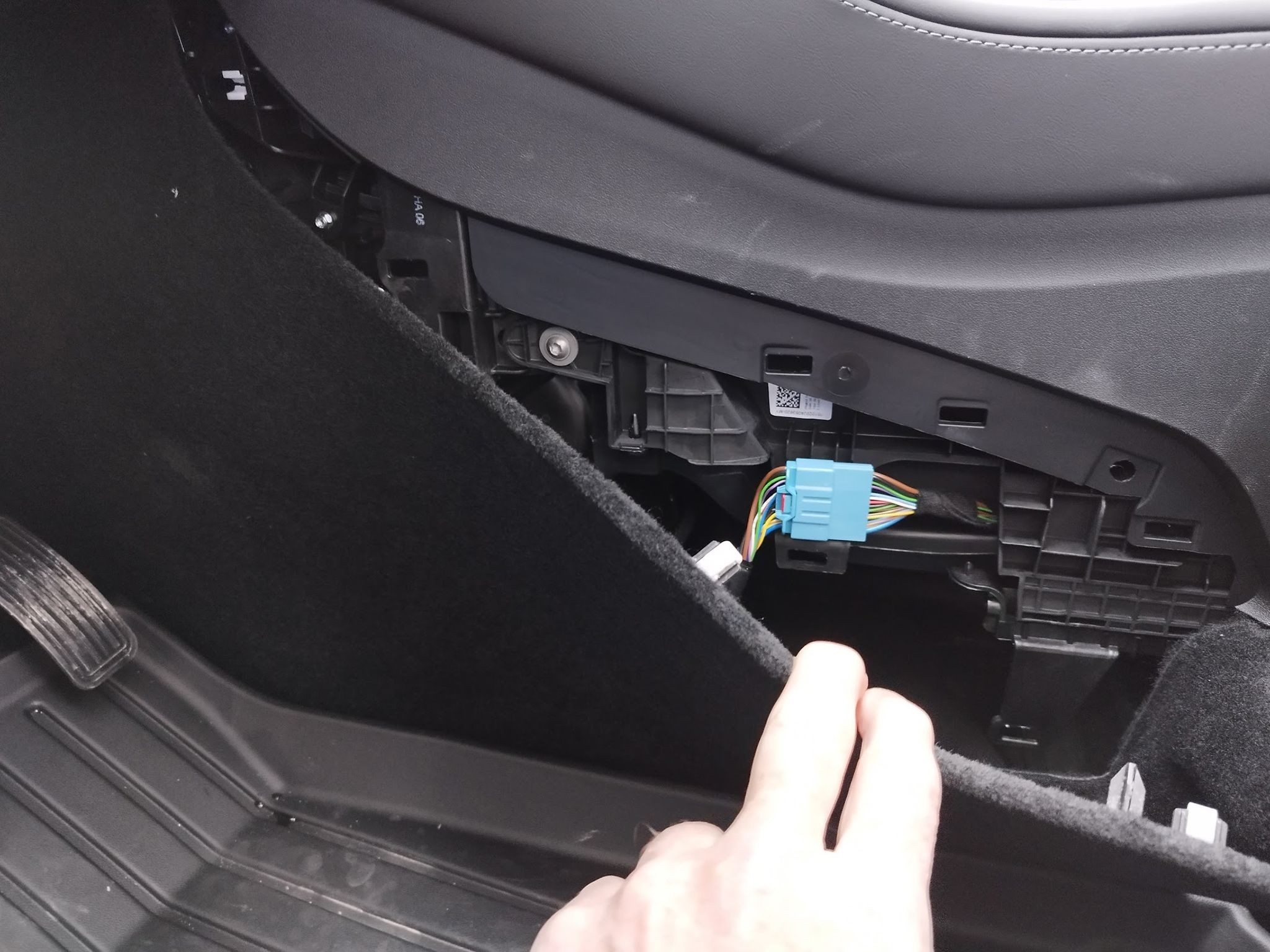Tesla vehicles, particularly the Model Y, are renowned for their technological advancements and streamlined design. However, one feature often missed by car enthusiasts and those keen on vehicle diagnostics is a readily accessible OBD2 port. While not immediately apparent, accessing your Tesla Model Y Obd2 Port is simpler than you might think, opening up a world of vehicle data and customization possibilities. This guide will illuminate how to locate and utilize the OBD2 port in your Tesla Model Y, enhancing your understanding and control over your electric vehicle.
Understanding the OBD2 Port in Your Tesla Model Y
The On-Board Diagnostics II (OBD2) port is a standardized interface in most modern vehicles, allowing access to a wealth of vehicle data for diagnostics, performance monitoring, and even connecting aftermarket accessories. Traditionally, you’d find this port easily accessible under the dashboard of gasoline-powered cars. However, Tesla’s design philosophy often integrates and sometimes hides conventional ports to maintain a clean and minimalist interior.
For Tesla Model Y owners, the OBD2 port isn’t absent, but it is less conventionally placed. It’s designed to be accessible, primarily for service technicians, but also for owners who wish to tap into the rich data stream their vehicle produces. Adding direct access via an adapter makes this data readily available for various uses.
Locating the OBD2 Port and Installing an Adapter
The standard location to access the OBD2 connectors in a Tesla Model Y (and Model 3 built before 2024) is within the center console area, specifically in the rear footwell. Here’s a step-by-step guide to accessing it and installing an OBD2 adapter:
-
Preparation and Safety First:
- Disable Sentry Mode: Using your Tesla mobile app or the car’s touchscreen (Controls -> Safety -> Sentry Mode = Off), disable Sentry Mode. This is a precautionary step before powering down the vehicle.
- Powering Down Completely: Crucially, the vehicle needs to be completely powered off. Lower the driver’s side window fully and close the driver’s door. Open a rear door to allow access for adapter installation later. Then, through the open window, use the touchscreen to power off the car: Controls -> Safety -> Power Off.
- Wait for Complete Shutdown: This is a vital step. Wait for 8-10 minutes for the vehicle’s systems to fully shut down. You’ll typically hear a relay click and any humming noises from the car will cease. Do not proceed before ensuring the car is completely off.
-
Accessing the Connectors:
- Remove the Footwell Cover: In the rear footwell area of the center console, locate a small protective cover. This is secured by approximately 5 clips. Carefully pull or gently pry around the edges to release the clips and remove the cover.
-
Connecting the OBD2 Adapter:
- Locate and Disconnect the Connector: Behind the cover, you’ll find the vehicle’s wiring harness and a connector. Disconnect this connector.
- Install the OBD2 Adapter: Position the OBD2 adapter between the disconnected connectors. Ensure all connections are firmly and properly seated.
- Replace the Cover: Once the adapter is securely in place, carefully re-attach the footwell cover.
-
Positioning the OBD2 Port (Tip):
- Extend the Port for Easy Access: Consider routing the OBD2 port, using an extension cable if needed, to a more accessible location. For example, you could place it under the footwell cover or beneath the front seats. This eliminates the need to remove the cover every time you want to connect an OBD2 device.
 Tesla Model 3 2024 OBD port location in the driver's footwell
Tesla Model 3 2024 OBD port location in the driver's footwell
Image alt text: Location of the OBD2 port in a 2024 Tesla Model 3, situated in the driver’s side footwell behind a panel. This new location applies to 2024 and newer Model 3 and likely Model Y vehicles.
Important Note for 2024 and Newer Models
For 2024 and newer Tesla Model 3 and likely Model Y vehicles, the OBD2 port location has changed. Instead of the center console footwell, you’ll find the connector behind a panel in the driver’s side footwell, near your right foot. The installation process remains similar – ensuring the car is completely powered off before connecting the adapter – but the physical location of the port is different.
Utilizing Your Tesla Model Y OBD2 Port
Once the OBD2 adapter is installed, you can connect a variety of OBD2 devices, such as:
- OBD2 Bluetooth Dongles: These can wirelessly transmit vehicle data to your smartphone or tablet, allowing you to monitor performance, diagnose issues, and use apps designed for vehicle data analysis.
- Performance Monitoring Devices: Track metrics like speed, acceleration, battery health, and more in real-time.
- Aftermarket Accessories: In some cases, OBD2 access can be used to trigger or control certain aftermarket accessories, such as auxiliary lights (as mentioned in the original article with the XBB Dongle).
Safety and Responsibility
Crucial Warning: Incorrect installation can potentially damage your vehicle’s electrical system. It is paramount to ensure the car is completely powered off before beginning any installation. Valostore and techcarusa.com are not responsible for any damage resulting from improper installation. Proceed with caution and if you are unsure, consult a qualified technician.
Technical Specifications
- Product: OBD2 adapter Tesla Model 3 and Model Y (1/2019 onwards)
- Purpose: Adds an OBD2 port to Tesla Model 3 and Model Y vehicles.
- Location: Installed in the center console rear footwell (pre-2024 models) or driver’s footwell (2024+ models) between existing connectors.
By adding an OBD2 port to your Tesla Model Y, you unlock a greater level of insight into your vehicle’s operation and expand its compatibility with a range of useful accessories and diagnostic tools. Enjoy the enhanced connectivity and data access your OBD2 adapter provides!
